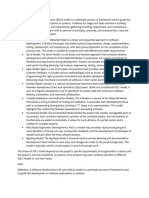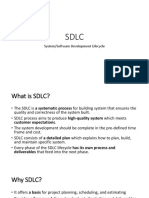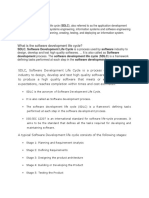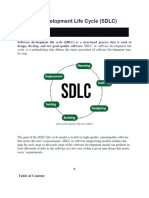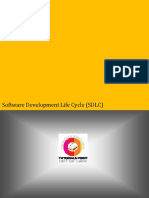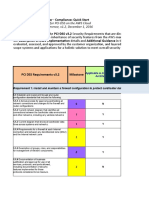0% found this document useful (0 votes)
27 views3 pagesSoftware Development Life Cycle (SDLC) - Overview
The Software Development Life Cycle (SDLC) is a structured process for planning, developing, testing, and deploying software to meet customer expectations within budget and time constraints. It consists of key phases including requirement analysis, planning, system design, implementation, testing, deployment, and maintenance, with various models like Waterfall, Agile, and DevOps. The importance of SDLC lies in its ability to ensure structure, improve quality, reduce risk, and enhance collaboration among stakeholders.
Uploaded by
Sahan KaveeshaCopyright
© © All Rights Reserved
We take content rights seriously. If you suspect this is your content, claim it here.
Available Formats
Download as PDF, TXT or read online on Scribd
0% found this document useful (0 votes)
27 views3 pagesSoftware Development Life Cycle (SDLC) - Overview
The Software Development Life Cycle (SDLC) is a structured process for planning, developing, testing, and deploying software to meet customer expectations within budget and time constraints. It consists of key phases including requirement analysis, planning, system design, implementation, testing, deployment, and maintenance, with various models like Waterfall, Agile, and DevOps. The importance of SDLC lies in its ability to ensure structure, improve quality, reduce risk, and enhance collaboration among stakeholders.
Uploaded by
Sahan KaveeshaCopyright
© © All Rights Reserved
We take content rights seriously. If you suspect this is your content, claim it here.
Available Formats
Download as PDF, TXT or read online on Scribd
/ 3





